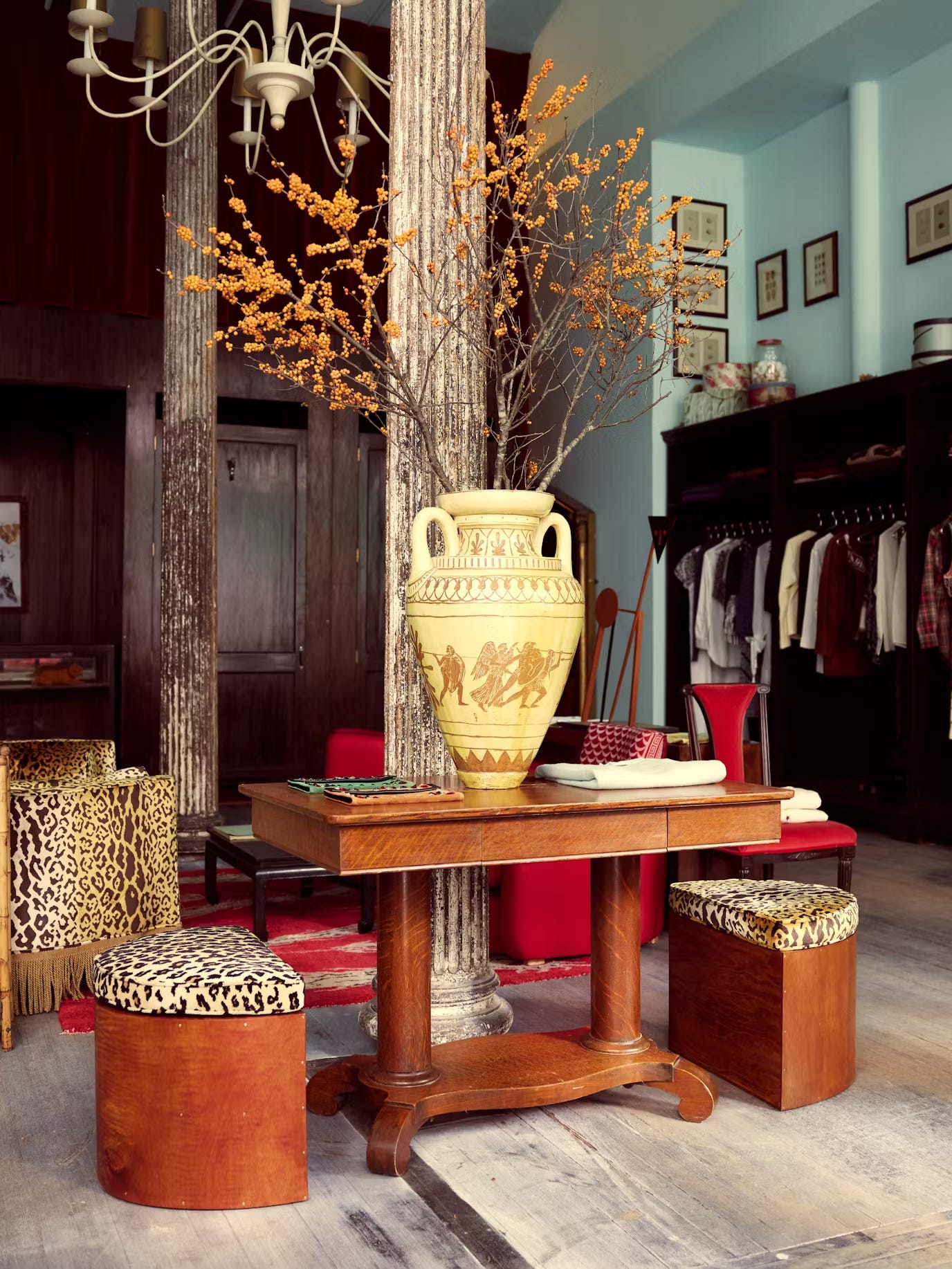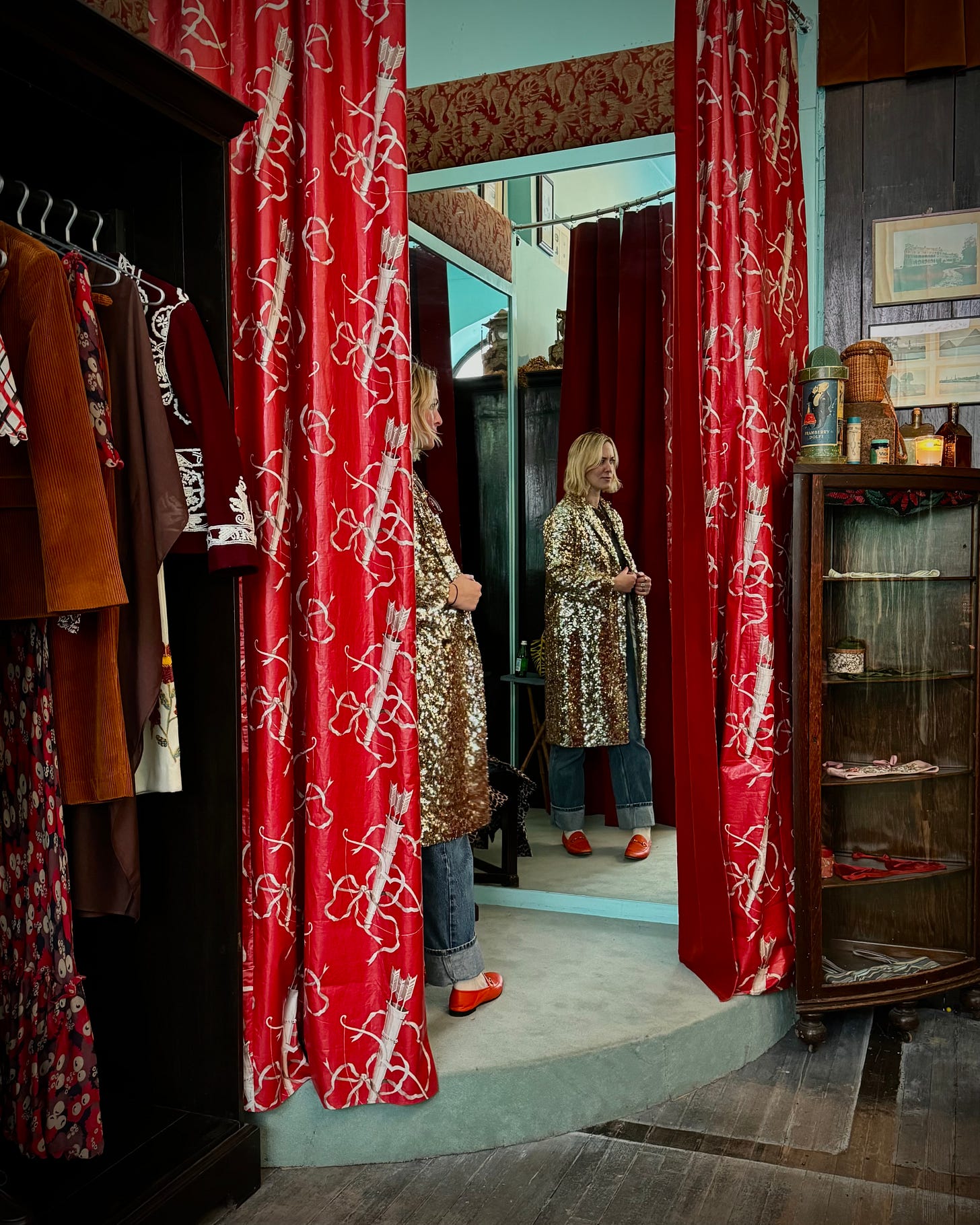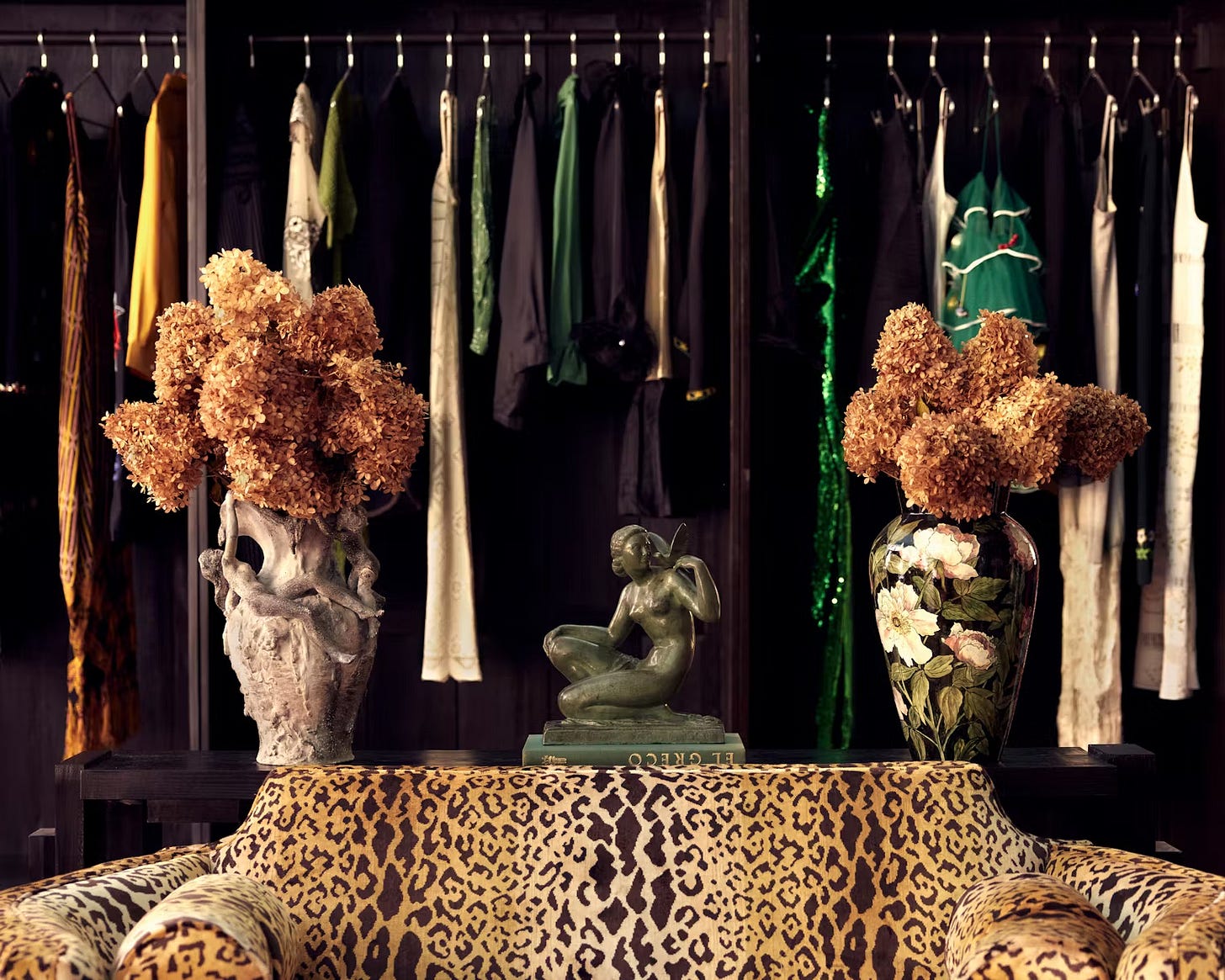Welcome back to Room Recipe, a column on À La Carte where we stare at an image of a room we love for a very long time, then break down its “ingredients” into specific items and themes. The goal is never to copy, but instead to get to the bottom of why certain rooms just *work* and to understand how we can translate that inspiration into real life.
During one of the trips I took to New York last year, my friend Jordy and I popped into the Bode womenswear store in Tribeca. Like everyone else on the planet, I’m in constant awe of Emily Adams Bode Aujla’s ability to build a brand world so baked in history, nostalgia, and reverence for craft… And also, I just like Bode’s clothes. So to Tribeca we went.
Each Bode store has its own unique little story to it. The shop in LA feels like it could be a wing at the Museum of Natural History, each rack a diorama of patchwork shirts and beaded pants. Bode’s flagship location (now their menswear store) on the Lower East Side has a sort of grandpa’s cabin, collegiate vibe, which really nods to where the brand started. But the Bode womenswear store feels like a little jewel box, like being invited into the closet of a fancy older woman who’s been collecting pieces—not clothes; pieces—for decades.
In the middle of the store, between two antique columns, sits a fringed, leopard-print settee opposite two red upholstered chairs. In any other context the combination of patterns would be a certifiably insane choice, but surrounded by robin’s egg blue walls (a nod to the signature color of renowned French antiques dealer Madeleine Castaing), dark built-ins, and collected antiques, it just feels right. The entire space is filled with dried hydrangeas, and on all the shelves you’ll find things like jars of buttons, 1920s fashion magazines, and beaded accessories that look like they’re each likely one of one. It feels like a place you want to, and can, play dress up—even the changing room, a small, curtained corner of the shop, looks like a little stage.
A couple of months ago I read an article in World of Interiors about the Bode Aujlas’ West Village apartment, a brick terrace house that was once owned by the playwright Lorraine Hansberry, the first African-American author to have a play performed on Broadway. In the early 1900s the apartment was rented by painter Everett Shinn, whose work in art, architecture, theater, and interiors inspired Emily and her husband Aaron as they designed their home. The walls in the apartment are also painted in that robin’s egg blue, and there are some Art Deco design details in both spaces that seem like they’re in conversation with each other. Maybe it was a matter of timing or resources (I believe they were remodeling the apartment and designing the shop around the same time), but I have a feeling the apartment building’s rich history in theater had a part to play in their approach to the design of the store, too.
Let’s get into the recipe, shall we?
INGREDIENTS:
Leopard print
Red upholstery
Fringe (via furniture or decor)
Art deco silhouettes—curved sofa arms, arched chair backs, etc.
Something robin’s egg blue—a chair, a wall, an accessory
A rug, ideally tonal to the furniture
Antique coat racks, hat stands, and peg rails
Patterned storage boxes
A folding screen
Large vases—a mix of porcelain and aged metals
Dried hydrangeas
Art nouveau motifs in artwork, textiles, and furniture
A fashion magazine from the 1920s (or a few)
STEP ONE:
Start by choosing your largest pieces of furniture—a sofa, a couple of chairs, or a settee. Look for pieces that feel like they could exist in the world of The Great Gatsby, both in shape and in print. Search the vintage sites for “art deco” or “art nouveau” furniture. Some leopard prints can read tacky, so aim for rich materials like velvet or mohair and avoid anything synthetic. To embrace both leopard print and a rich red can feel like a lot, but don’t fear—it’ll all come together in step 2. Fringe is welcome.

STEP TWO:
There’s something about how patterns and colors are repeated in this space that makes them feel highly intentional: the red rug beneath the red chairs, the leopard stools upholstered in the same fabric as the sofa, the blue carpet in the dressing room and the blue walls… It’s eclectic, yet restrained. Imagine if there were a green rug beneath the seating area or a yellow curtain in the corner. It wouldn’t work nearly as well. A rug is a good opportunity to double up on an element you’re already using elsewhere, so if you’ve got a blue sofa, a blue rug could be your move.

STEP THREE:
The functional details throughout the shop are what give it that “backstage dressing room” feeling—the cabinets full of treasures, the fixtures, and a lot of the decor feels like it could have been plucked off the set of Phantom Thread. Look for antique French valets, hat stands, coat racks, and room dividers to bring that same feeling to life here. (That hat with the pom pom on it is a box! Can you even?)

STEP FOUR:
Lastly, finish with the accoutrements. Ornate vases filled with dried hydrangeas (there are tons of dried flowers on Etsy!), beaded or fringed accessories, and artworks of women draped in fabric will drive the story home. Look for items in golds, greens, reds, and blues—”vintage fringe,” “Ginori vase,” “antique Vogue,” “flapper bag,” “art deco frame,” and “art nouveau artwork” will yield some fun results on 1st Dibs and Chairish. Fill the room with clothes and enjoy.


And, scene.
x
Ali
ÀLC FAQ: How do you make your mood boards?
It’s been a minute—like, almost a year—since I’ve done an FAQ post. But I’m back, baby! Wiser than ever! (Kidding.)
At the Table With: Jessie Randall
At The Table With is a monthly interview series that explores the ideas of creativity and personal taste through the eyes of my friends (or people I would like to be friends with). This month’s guest is the founder and creative director of Loeffler Randall, Jessie Randall!
The May Specials: Tailoring, Raffia, and Designing for Scents
Welcome to May’s Specials, a list of things I’ve been collecting this month to share with you.











Such a fun read! You’re incredible at sourcing!
Great advice and pictures...